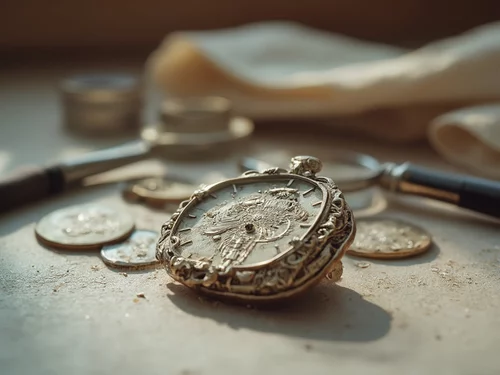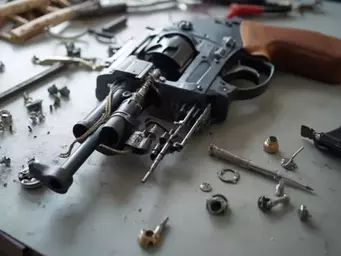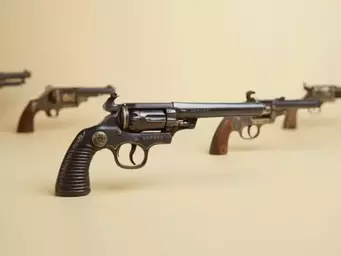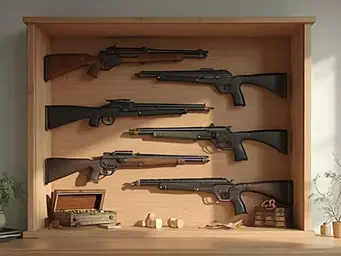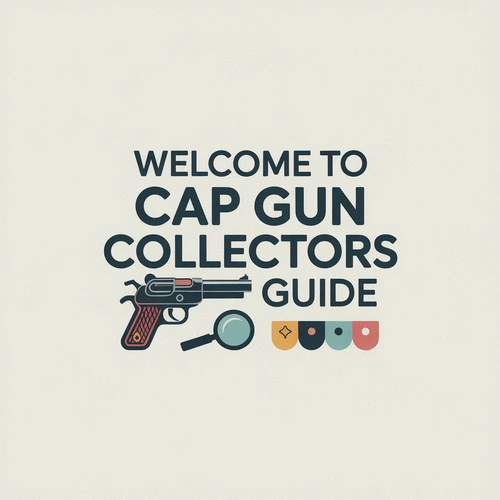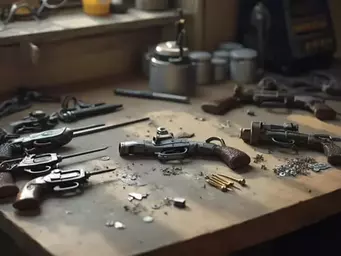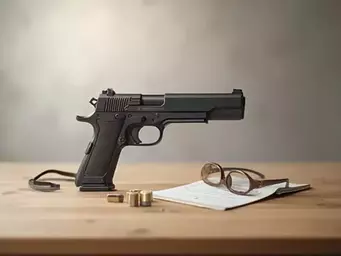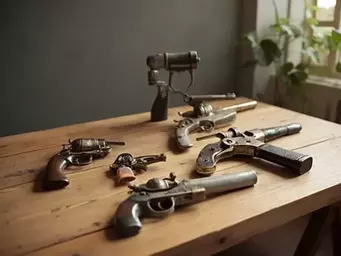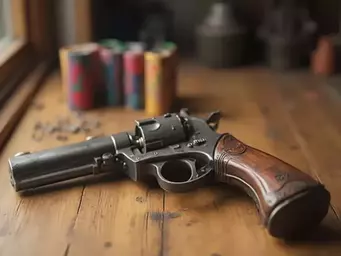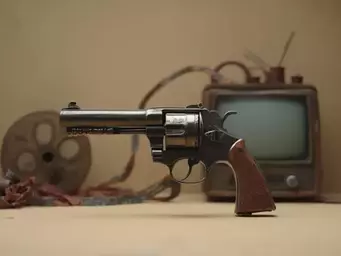Every collector faces the pivotal choice between preserving and restoring their beloved pieces. This article delves into the intricate balance that must be maintained to honor the authenticity and history of collectibles, particularly cap guns. Discover the essential practices and ethical considerations that can guide you on your collecting journey.
What You Will Learn
- Maintaining the integrity of collectibles is crucial for preserving their historical significance.
- Knowing the difference between full restoration and conservation can impact the value and authenticity of your items.
- Regular inspections and proper storage techniques help maintain the condition and aesthetic appeal of your collectibles.
- Ethical responsibilities in collecting include transparency about modifications and respecting originality.
- Factors influencing restoration decisions include the item's value, condition, and intended usage.
- Conducting a thorough damage assessment is vital before considering restoration work.
Preservation vs. Restoration: Key Distinctions in Collecting
Understanding when to preserve and when to restore is crucial for cap gun collectors. This visual highlights the core differences and ethical considerations guiding these decisions.
Preservation & Conservation
Focuses on maintaining the item's original state, addressing deterioration without altering historical fabric.
- ✓ Respect for Originality
- ✓ Document Existing State
- ✓ Maintain Value & History
Full Restoration
Involves repairing or replacing parts to return an item to original condition, potentially altering historical fabric.
- ✗ May Compromise Authenticity
- ✗ Requires Transparency
- ✗ Influenced by Value & Usage
Understanding the Balance Between Preservation and Restoration
As a passionate toy collector and historian, I often find myself reflecting on the intricate balance between preservation and restoration in our beloved hobby of collecting cap guns. It’s essential to understand that each piece in our collection has its own story to tell, and preserving its authenticity is key to honoring that history. Whether we’re speaking about vintage cap guns or modern replicas, collectors must navigate these choices carefully.
When collectors dive into the world of restorations, they should always remember that the goal is to maintain the integrity of the original item while enhancing its visual appeal. Knowing when to restore and when to simply preserve can make all the difference in maintaining both the item’s value and its historical significance.
What Do Collectors Need to Know About Value Preservation?
Understanding how to preserve value is crucial for any collector. Here are a few key points to keep in mind:
- Condition Maintenance: Regularly inspect your collectibles for any signs of wear or damage.
- Storage Techniques: Proper storage can protect your items from dust, light, and moisture.
- Documentation: Keep records of each piece’s history and any work done on it.
These practices not only help maintain the aesthetic appeal of your cap guns but also their market value over time. Each time you consider a restoration, think about how it might impact the item's historical context. For more insights on preserving historical items, the National Park Service provides valuable resources on heritage preservation.
Defining Full Restoration vs. Conservation: Key Differences
It's essential to grasp the distinctions between full restoration and conservation. Here’s a quick breakdown:
- Full Restoration: Involves repairing or replacing parts to return the item to its original condition, often altering its historical fabric.
- Conservation: Focuses on preserving the existing state of the item, addressing any deterioration while maintaining its original materials and features.
As a collector, my approach often leans toward conservation. By doing so, I honor the original craftsmanship of the cap guns while ensuring their stories remain intact for future generations to appreciate. The UNESCO document on the preservation of cultural heritage further emphasizes the importance of maintaining authenticity.
Exploring Conservation Ethics: The Responsibilities of Collectors
With great passion for collecting comes great responsibility. Collectors must be mindful of the ethical implications of their choices. Here are some ethical considerations to reflect on:
- Respect for Originality: Always consider the value of keeping an item's original parts intact.
- Transparency: Be open about any modifications made to the item when discussing or selling it.
- Community Engagement: Share knowledge and experiences with fellow collectors to foster a culture of ethical collecting.
By adhering to these ethical responsibilities, we help ensure that the legacy of cap guns is preserved for both current enthusiasts and future collectors. As we navigate through our collecting journeys, let’s approach preservation and restoration with care and respect, recognizing the significance of every cap gun in our collections. The Department of the Interior's annual report highlights broader efforts in preserving America's historical and natural heritage.
Engage With Us!
As a collector, we want to hear your thoughts! When it comes to the debate between restoration and conservation, which approach do you prefer? Share your insights below:
Making Informed Decisions: When to Restore and When to Conserve
As collectors, we often find ourselves at a crossroads between restoration and conservation. Understanding when to restore a piece and when to conserve it is crucial for maintaining the value and integrity of our collections. Many factors influence these decisions, such as the item's current condition, its historical significance, and how we plan to use it. In this section, let's break down the key elements that guide our choices.
Factors Influencing Restoration Decisions: Value, Condition, and Usage
Before committing to any restoration work, it's essential to evaluate three primary factors: value, condition, and intended usage. Each element plays a critical role in determining the best course of action for your collectible.
- Value: Consider the market value of the item. A high-value collectible may warrant a full restoration to maximize its worth.
- Condition: Assess the current state. If it’s significantly damaged, restoration may be necessary; if it’s in good shape, conservation might suffice.
- Usage: Think about how you plan to display or use the item. Will it be a centerpiece in your collection, or stored away? This can influence your decision significantly.
By weighing these factors, you'll make more informed choices. For instance, a rare cap gun that holds sentimental value might deserve careful restoration, while a common model could benefit from conservation methods to keep it in its original state.
Damage Assessment: Evaluating Artifacts Before Restoration
Once you've considered the factors above, the next step is to conduct a thorough damage assessment. This process involves looking closely at the item's physical state and identifying any issues that may require attention.
- Surface Damage: Check for scratches, dents, or rust that may impact aesthetic value.
- Mechanical Functionality: Ensure moving parts work correctly. A non-functional piece can affect both value and enjoyment.
- Material Integrity: Examine the materials used, as certain components may require specialized treatment to preserve their integrity.
Taking the time to assess damage will guide you in deciding what type of restoration, if any, is necessary. Remember, each collectible has a story, and understanding its current condition is part of that narrative!
Ethical Considerations in Collectible Restoration
As passionate collectors, we have a responsibility to uphold ethical standards in restoration. This means being mindful of how our actions can affect the historical significance and authenticity of our items.
- Authenticity: Always prioritize maintaining the original character of the piece. Overzealous restoration can strip away its historical value.
- Documentation: Keep detailed records of any restoration work. This transparency is vital for future owners and enhances trust within the collecting community.
- Professional Help: Don’t hesitate to seek expert guidance when needed. Professionals can help ensure that restoration methods align with best practices.
By adhering to these ethical considerations, we not only protect our investments but also honor the craftsmanship behind these wonderful pieces. Each restoration decision should reflect respect for the history and art of cap guns!
Frequently Asked Questions (FAQs)
What is the primary difference between preservation and restoration?
Preservation focuses on maintaining an item's original state and addressing deterioration without altering its historical fabric. Restoration involves repairing or replacing parts to return an item to its original condition, which may alter its historical fabric.
Why is it important to consider ethical implications in collecting?
Ethical considerations ensure that the historical significance and authenticity of collectibles are maintained. This includes respecting originality, being transparent about modifications, and sharing knowledge within the collecting community.
What factors should influence a collector's decision to restore or conserve an item?
Collectors should consider the item's market value, its current condition, and its intended usage (e.g., display vs. storage). These factors help determine the most appropriate course of action.
How does proper storage affect the value of collectibles?
Proper storage techniques protect items from environmental damage like dust, light, and moisture, which helps maintain their aesthetic appeal and market value over time.
What role does documentation play in the restoration process?
Documentation involves keeping detailed records of an item's history and any work done on it. This transparency is crucial for future owners and enhances trust within the collecting community, preserving the item's narrative.
Recap of Key Points
Here is a quick recap of the important points discussed in the article:
- Preservation vs. Restoration: Always prioritize the integrity of the original item while enhancing its visual appeal.
- Value Preservation: Regular inspection, proper storage, and documentation are crucial for maintaining the value of collectibles.
- Understanding Restoration Types: Distinguish between full restoration and conservation; focus on preserving originality.
- Ethical Considerations: Respect originality, maintain transparency about modifications, and engage with the collector community.
- Informed Decision-Making: Consider the value, condition, and intended usage of items before restoring or conserving.
- Damage Assessment: Evaluate surface damage, mechanical functionality, and material integrity before proceeding with restoration.

